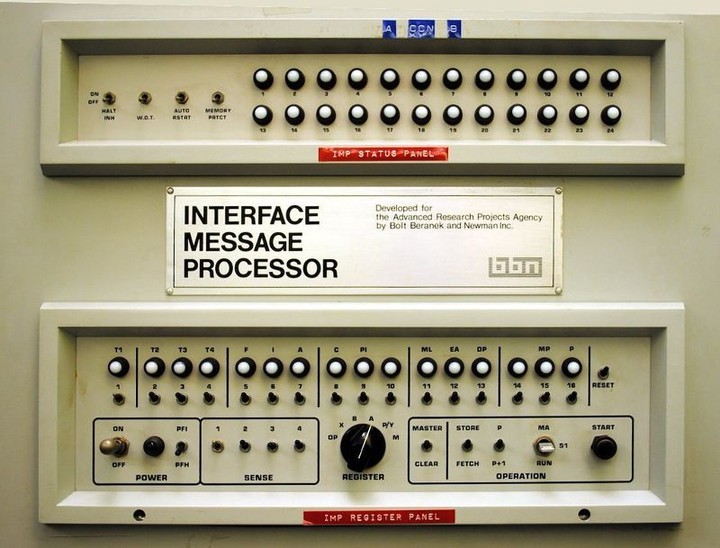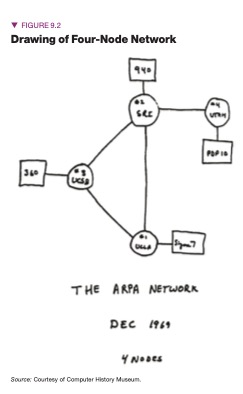
Each mainframe computer in the original ARPANet configuration communicated over the network using a Interface Message Processor, a minicomputer that could handle all of the network communication, allowing otherwise incompatible computers to talk with each other.
The Advanced Research Projects Agency Network (ARPANet), the first wide-area packet-switching network, made its first successful computer-to-computer connection on Oct. 29, 1969. Unlike some earlier conceptions of the network, it was intended to serve the needs of academic researchers, not to survive nuclear war.
 The network was built by a farsighted division of the Pentagon called the Advanced Research Projects Agency (ARPA). In 1968, the contract to build the network was given to a Boston-based consulting firm on the condition that it be built in less than one year. By the fall of 1969, ARPAnet connected four different institutions, and the first component of what would eventually become the internet was running.
The network was built by a farsighted division of the Pentagon called the Advanced Research Projects Agency (ARPA). In 1968, the contract to build the network was given to a Boston-based consulting firm on the condition that it be built in less than one year. By the fall of 1969, ARPAnet connected four different institutions, and the first component of what would eventually become the internet was running.
As the hand-drawn map of ARPAnet shows, the initial nodes were University of California–Los Angeles, Stanford Research Institute, University of California–Santa Barbara, and University of Utah. ARPAnet came online at about the same time as the first moon landing. Whereas Neil Armstrong’s “one small step” was noted throughout the world as one of the great achievements of humanity, no one outside of ARPA was aware that a new, world-changing medium had just been born.
